Hey there, fellow paintballers!
As an expert in the world of paintball, I am thrilled to share my knowledge and experience with you. Today, I want to talk about one of the most critical pieces of equipment: the paintball gun or, as they are commonly referred to markers.
In case you’re new to the game, a marker is a device used to shoot paint balls at opponents during gameplay. They come in a wide range of styles and types, each with its unique features and advantages. From pump-action to electronic, there’s a paintball gun out there for every player.
In this post, I’ll be discussing some of the different types of paintball guns available, the pros and cons of each, and what kind of player each type is best suited for. So whether you’re a seasoned veteran or just starting, let’s dive in and explore the world of markers together!
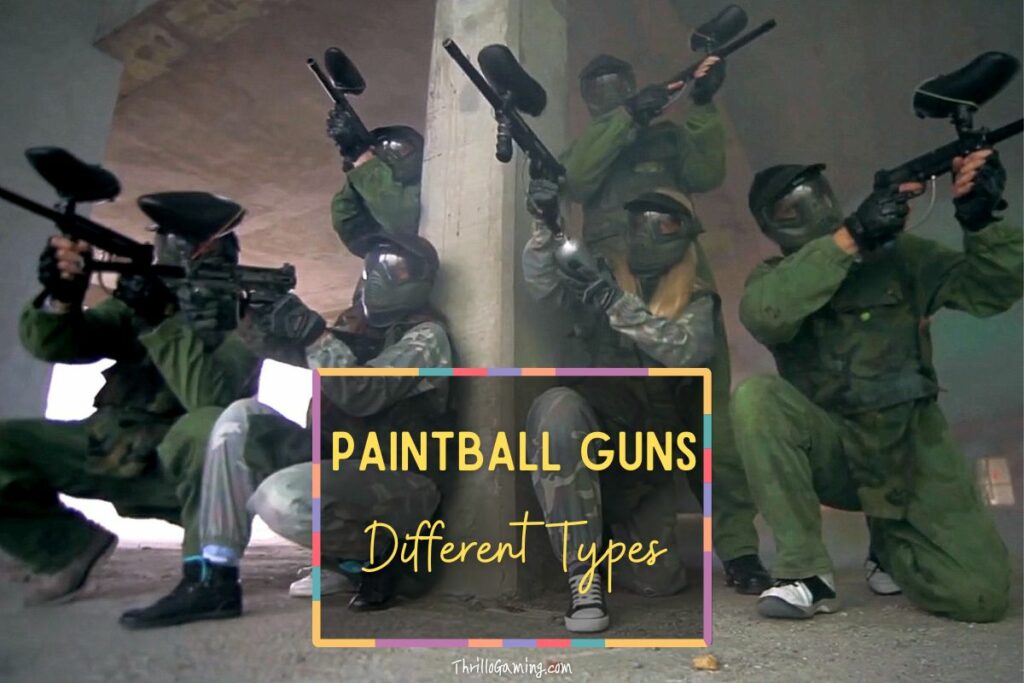
1. Pump-action Paintball Gun
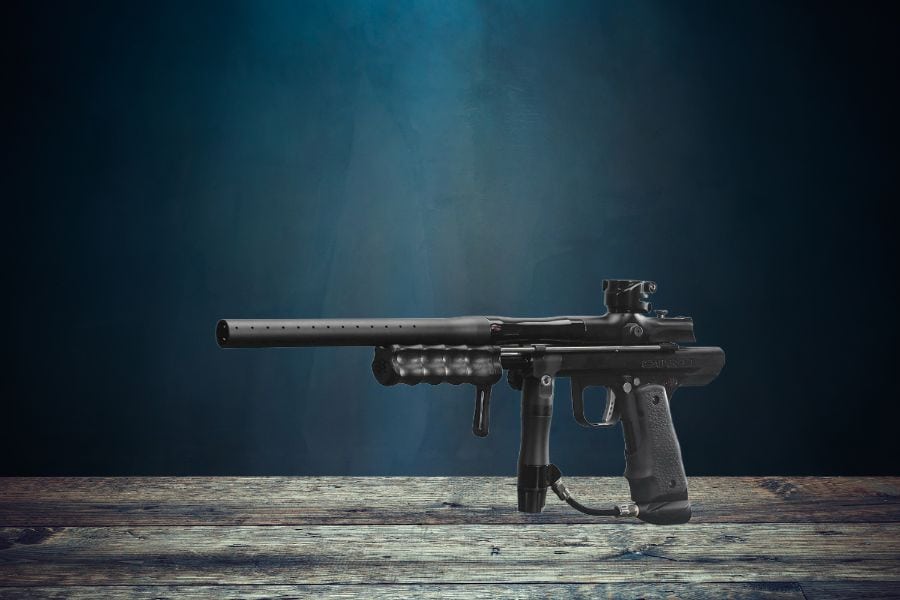
Pump-action paintball guns feature a shotgun-style pump to cock the marker. You’ll have to manually chamber each shot using this pump before you fire. Despite requiring a manual operation, this type of gun have been recently making a comeback in the market. Based on my firsthand experience, pump-action markers are fairly reliable and help players grow their skills and accuracy.
Expert Tip
You have to play very cautiously when using a pump-action paintball gun. If you miss a shot, it’ll take a few seconds before you can get ready the next shot, aim, and fire again. This will give your opponent time to shoot at you while you’re vulnerable in the paintball arena. It takes quite some skill to play well with these guns, which is why I wouldn’t recommend it for beginners.
Personally, I’m not a big fan of pump-action guns, although it’s fun to play with them once in a while. It’s mostly because this type of gun would put me at a serious disadvantage against opponents with semi-auto and electronic paintball guns. Apart from the slow firing rate, the manual chambering system of open bolt markers also makes it harder to correct your arm, as you have to move the gun after each shot.
PROS
Lightweight and easy to carry.
Forces you to focus on accuracy.
Promotes teamplay and communication.
Needs less air than semi-automatic paintball guns.
Prompts you to play more proactively rather than hanging back.
CONS
Manual operation.
Very low rate of fire.
Lower range.
Not much scope for aim correction.
Also Read: Parts Of A Paintball Gun
2. Bolt-action Paintball Gun
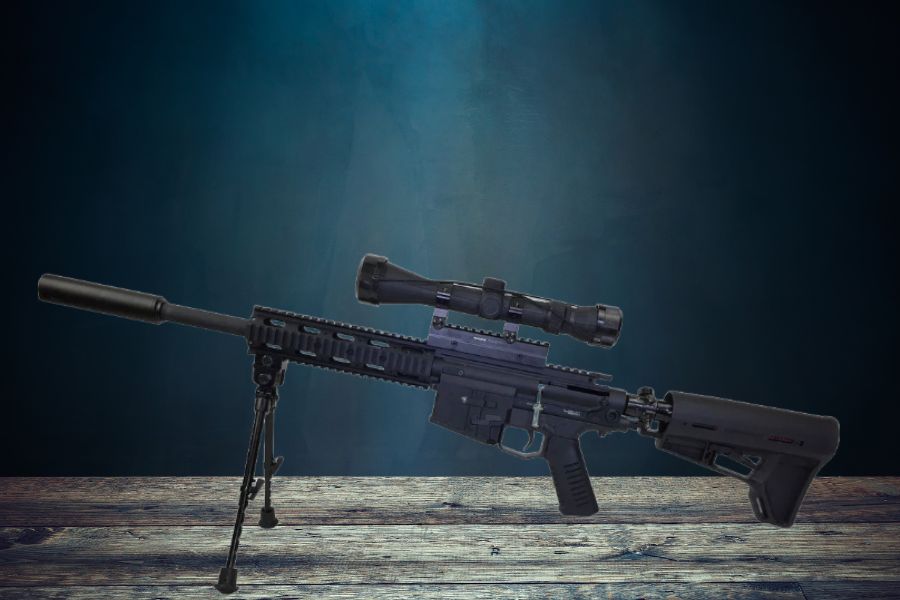
Bolt-action or closed bolt paintball guns are a sophisticated type of pump-action markers. They work similarly to actual bolt-action rifles – the ammunition is chambered using a metal bolt placed at the rear part of the marker.
Turning the bolt pushes the next pellet from the magazine to the chamber and locks it in place. Although you still have to operate the bolt manually, it doesn’t require you to move the gun off its position. This makes bolt-action paintball guns more convenient to use than the pump-action ones.
Closed bolt guns are growing uncommon as the demand continues to shift towards mechanical and electronic markers. However, the mechanism is still used in sniper guns for its precision and accuracy.
I’ve used bolt-action paintball guns a few times, and honestly, they’re fun. The experience is a bit different from the more common automatic and semi-automatic markers. However, keep in mind that the low reload speed will still put you at a disadvantage against more sophisticated models.
PROS
Quicker chambering than pump-action paintball guns.
High air and ammo efficiency.
Possible to improve accuracy on consecutive shots.
More convenient to use than pump-action guns.
Promotes better aiming and skill.
CONS
Low firing rate.
Manual operation.
Apart from sniping, bolt action paintball guns are less preferable.
3. Semi-automatic Or Mechanical Paintball Gun
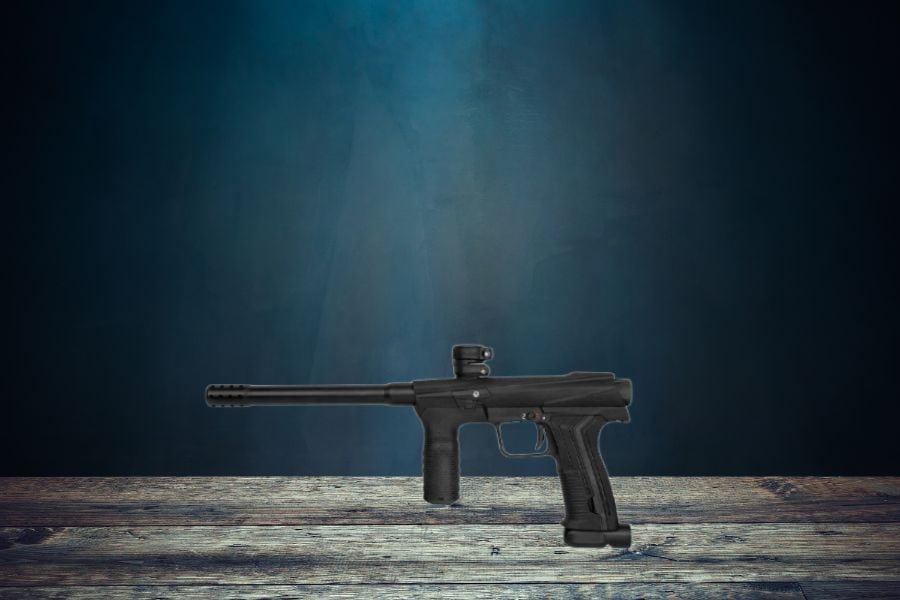
The Tippman 98 paintball gun I bought in my early career falls into this category. Mechanical paintball guns are semi-automatic in nature and falls among the most popular markers on the market. These markers generally use compressed air or carbon dioxide to propel the ammunition. Pulling the trigger moves a sear catch, releasing a striker or hammer that stays under spring tension.
The striker, in turn, hits the valve and holds it open long enough for the pellet to exit the barrel. The next paint ball is automatically placed into the breech while the blowback pushes the striker back into the sear. Mechanical paintball guns do not require an external power source – the solenoid is operated by pressurized gas/air.
There are two types of semi-automatic paint ball marker designs – stack tube and inline. My Tippman 98 was an inline model, and I have no complaints about it. However, stack tube guns are more gas-efficient.
While electronic markers are leading the market, semi-automatic models are also very popular and considered among the best paintball guns in both woodsball and speedball scenarios.
PROS
Great for beginners.
No need for batteries.
Easy to find replacement parts.
Much higher rate of fire than pump and bolt-action paintball guns.
CONS
Low accuracy compared to electronic paintball gun.
High recoil.
4. Electronic Paintball Gun
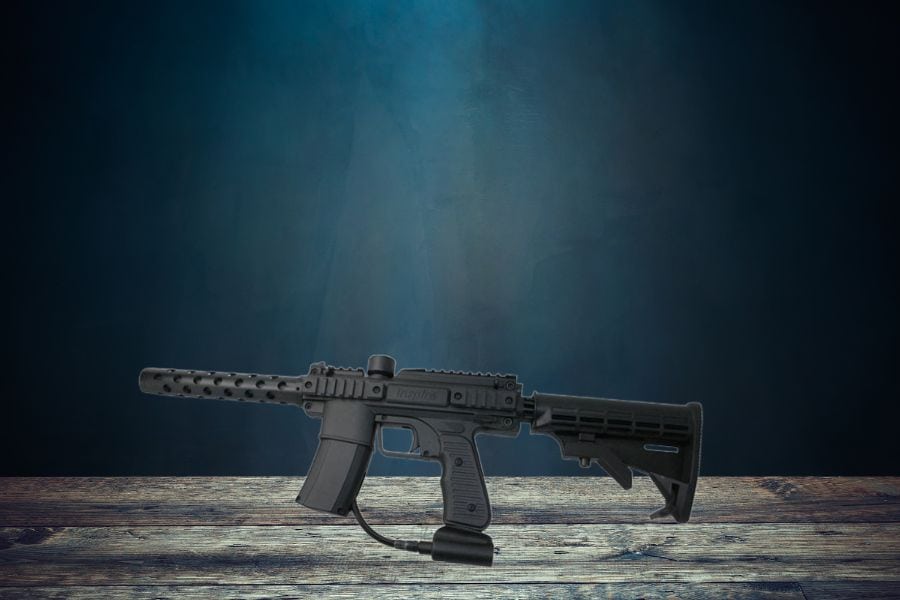
As you might imagine, electronic paintball guns are the most sophisticated and costliest markers on the market. Unlike mechanical guns, they use a circuit board to activate the solenoid.
Thus, pulling the trigger will open a solenoid and allow air to flow into the bolt assembly. The air pushes the bolt forward and moves on into the barrel, ultimately shooting the paint ball out of the gun. The bolt may either move back immediately or when you release the trigger.
Expert Tip
Electronic paintball guns are available in both fully automatic and semi-automatic modes. However, many arenas do not allow the use of fully auto markers. Even mainstream tournaments ban the use of the full-auto mode as it’s deemed to require no skill and is often against the rules and regulations. However, you can still use ramping – a firing mode that allows electronic guns to shoot at a preset BPS (balls per second).
As you can see, electronic paintball markers are great, but they come with their own share of drawbacks too. These guns certainly offer much better performance than their mechanical counterparts but are much more expensive both initially and in the long run. Also, they don’t usually work on CO2 and need compressed air, which makes them less versatile.
PROS
Very high firing rate.
Lighter recoil.
Quick triggering mechanism.
High air tank efficiency.
Compact and light.
No blowback (in some models).
CONS
Most expensive type of paintball guns.
Require batteries.
Harder to repair and usually needs professional servicing.
Apart from these four kinds of paintball guns, there are electro-pneumatic, electronic hammer, Pneumatic-assist hammer, Mag-fed, Stock-class and non-automatic markers in the market. These are less popular and basically hybrid versions of the above-listed guns. The working methods of each of those paintball guns are different and depend on the specific type.
Here is a comparison table for different types of paint ball guns based on their functions, features and performance.
| Point of Difference | Pump-Action | Bolt-Action | Mechanical | Electronic |
|---|---|---|---|---|
| Firing Rate | Slowest | Slow | Moderate to High | Highest |
| Shooting Range | Shortest | Longest | Average | Long |
| Recoil | Moderate | Low | Moderate | Least |
| Accuracy | Average | High | Average | High |
| Portability | High | Low | High | Moderate |
| Ease of Use | Complex | Complex | Easy | Easiest |
| Repair & Maintenance | Moderate | High | Moderate | Low |
| Cost | Low | High | Moderate | Highest |
If you were to ask me for recommendations for a paintball marker, I’d say go for a mechanical or electronic paintball gun. My old Tippman 98 never disappointed, and neither did the Tippman Cronus that I got later on.
A mechanical paintball gun has everything you need to be able to go toe-to-toe with your opponents as long as your skills are fine. The electronic ones are cool, but as I mentioned, they’re much more expensive to buy and repair and require batteries.
The only exception is if you’re more of a sniper player and prefer long-range shooting. Sniper paintball markers typically tend to be bolt-action, and that’s your best choice. So, that covers it all, and I hope this article has answered your queries.

